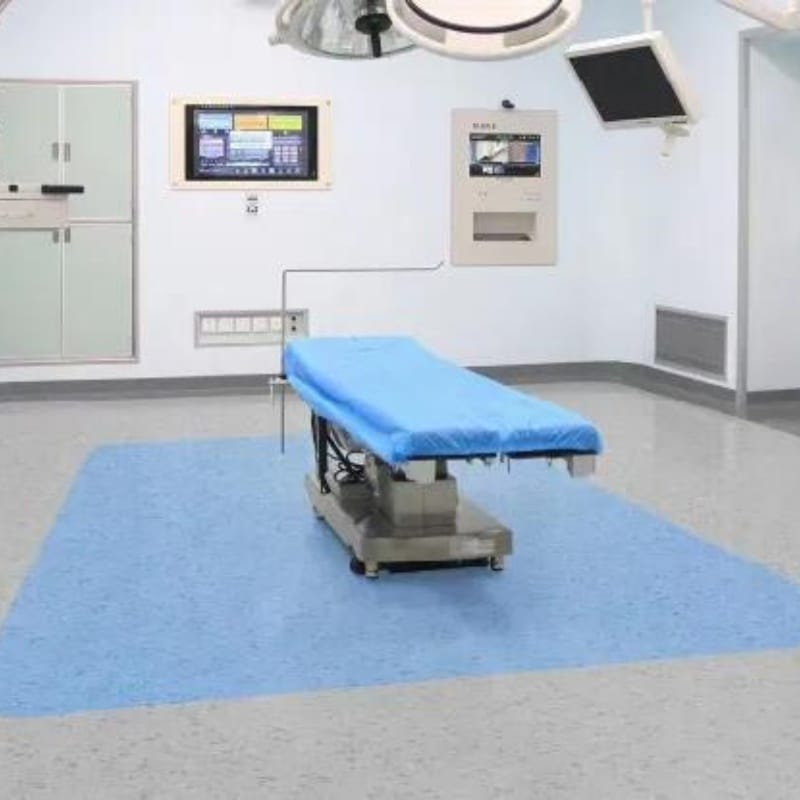In healthcare environments, the choice of flooring materials directly impacts patient safety, hygiene management, and facility longevity. In recent years, medical vinyl flooring (also known as medical PVC flooring) has become the preferred ground solution for hospitals, clinics, and laboratories due to its unique performance advantages. This article explores the core benefits of this material from a professional perspective, helping you understand why it is highly regarded in the medical field.

1. Superior Antibacterial and Stain Resistance to Reduce Infection Risks
The key advantage of medical vinyl flooring lies in its exceptional antibacterial and mold-resistant properties. By incorporating antimicrobial agents such as silver ions and nano-titanium dioxide, this flooring inhibits up to 99% of common pathogens like Staphylococcus aureus and E. coli. Its seamless, monolithic surface design eliminates hiding spots for bacteria, complying with stringent standards like GB 15982 (China’s Hospital Disinfection Hygiene Standards).
Additionally, the dense surface treatment prevents liquid penetration. Blood, chemicals, and other contaminants can be easily wiped away, significantly reducing cross-contamination risks.
2. Longevity and Low Maintenance Costs
Medical facilities endure high foot traffic and frequent equipment movement, demanding extreme durability from flooring. Medical-grade PVC flooring employs a multi-layer composite structure:
- Wear Layer: 0.5-0.7mm high-purity PVC coating with AC4-AC5 abrasion resistance.
- Stabilizing Layer: Reinforced with fiberglass for 30% improved impact resistance and dimensional stability.
- Foam Layer: Provides cushioning to reduce fatigue for healthcare workers standing for long hours.
Laboratory tests show that high-quality medical vinyl flooring lasts 10-15 years, with maintenance costs 40% lower than traditional terrazzo.
3. Comprehensive Safety Certifications
To meet healthcare-specific requirements, this flooring meets multiple safety certifications:
- Slip Resistance: Wet-state friction coefficient ≥0.45 (DIN 51130 standard), outperforming tiles and rubber flooring.
- Fire Resistance: Complies with B1 flame-retardant standards, self-extinguishing without toxic fumes.
- Static Dissipation: Surface resistance of 10⁶–10⁹Ω, protecting sensitive medical equipment from electrostatic interference.
- Eco-Certifications: GREENGUARD Gold, ISO 14001, and others ensure no heavy metals or plasticizers are released.
4. Flexible Installation and Aesthetic Design
Unlike traditional materials, medical vinyl flooring offers versatile options:
- Color Systems: Calming blue/green tones to ease patient anxiety or contrast schemes for zoning.
- Modular Installation: Roll or tile formats enable rapid installation, with heat-welded seams for full sealing.
- Noise Reduction: Impact sound pressure ≤65 dB, fostering quieter treatment environments.
- Thermal Conductivity: Compatible with underfloor heating (thermal conductivity: 0.18 W/(m·K)).
Conclusion
Medical vinyl flooring is redefining healthcare flooring standards with its hygienic safety, durability, and cost efficiency. Advances in material science will further enhance its capabilities, introducing innovations like smart sensing and self-healing features to support the evolving healthcare industry.
For a medical PVC flooring selection guide or customized solutions, visit jiaxincarpet.com or contact our senior engineering consultants for one-on-one consultation.



